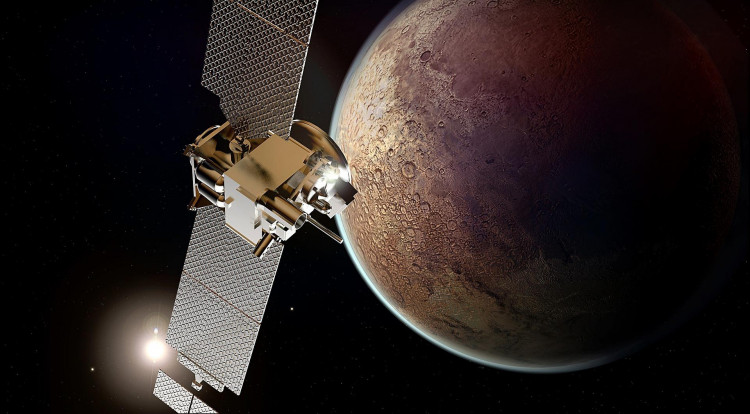Indian Space Research Organization (ISRO) ground stations no longer have contact with the spacecraft. According to media accounts, the exact cause is still unknown. The orbiter may have run out of propellant, MOM's battery may have discharged above the safe working limit, or an autonomous maneuver may have disrupted communications.
MOM, also known as Mangalyaan, has been operating on Mars for eight years, significantly exceeding its intended mission life of approximately six to 10 months. Launched in November 2013, the spacecraft orbited Mars in September 2014.
The solar array wing on one side of MOM measures 4.6 by 6 feet (1.4 by 1.8 meters) and is made up of three panels. The array on Mars is capable of producing 800 watts of power and can replenish a lithium-ion battery, but the spacecraft recently experienced a number of eclipses that may have hindered its capacity to do so.
A source at ISRO told the local daily The Hindu that "the satellite battery" had run out and "the link had been lost" with MOM, although the agency has not yet issued an official announcement.
In April, MOM emerged from a long eclipse, but as it recovered, the spacecraft may have used up all of its fuel. Around 1,880 pounds (852 kilograms) of fuel were carried by MOM at launch to operate its primary thruster and eight auxiliary thrusters for altitude control.
There's also a possibility that MOM's autonomous system brought it out of another eclipse, which might have caused the communications breakdown. It's possible that the system ordered the orbiter to roll-spin in order to alter course, which caused MOM's Earth-facing antenna to point away from our planet and the spacecraft to go silent.
During its first and second years orbiting Mars, MOM had already endured blackouts and recovered entirely on its own, without help from the Earth. However, preliminary findings imply that this latest blackout is permanent, and numerous insiders told the Times of India that regardless of the cause, the spacecraft won't be able to recover.
"Now, we are trying to ascertain the exact reason - whether it is the exhaustion of fuel or antenna being unable to communicate," an unnamed senior scientist said. "But one thing is for certain, we won't be able to recover the spacecraft anymore."
The mission's main objective was to use its equipment to examine the Martian surface and atmosphere from orbit while also testing the technologies required for interplanetary exploration. India's first interplanetary mission, MOM, made the ISRO the fourth space agency to successfully orbit Mars. On Oct.19, 2014, the spacecraft reached Mars just in time to see the passage of Comet Siding Spring.






